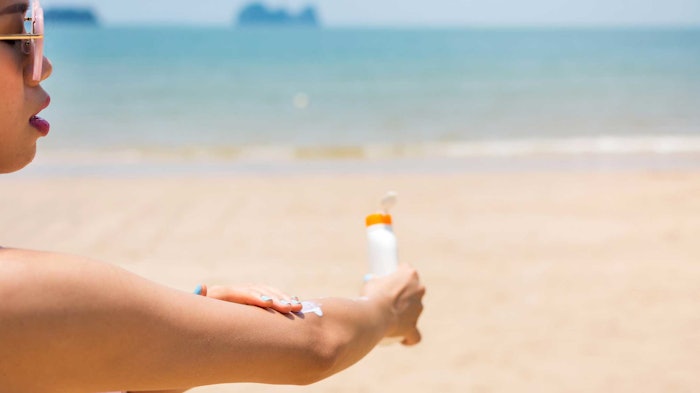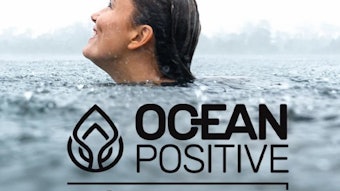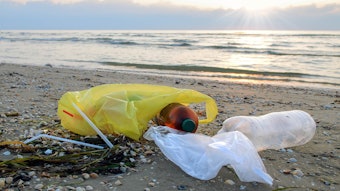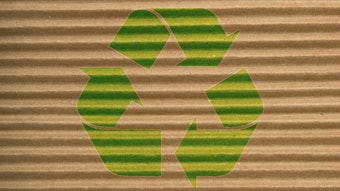
Bloomberg Law reported that on May 2, 2024, in a proposed class action suit filed in the state of New York, Target Corp. was accused of deceptively marketing its private label brand Up & Up sunscreens as "reef-conscious" — yet the formulas contain avobenzone, homosalate, octocrylene and octisalate ingredients. These ingredients are alleged to cause coral bleaching. This move follows a similar suit brought against the company in the state of Florida in December 2023, per Top Class Actions.
See archived: Bondi Sands 'Reef Friendly' Sunscreen Hit with Class Action Suit
In parallel, on May 3, also in New York, Walmart was named in a proposed class action for labeling its sunscreen as 'reef friendly' when it contains ingredients that are potentially harmful to coral reefs, Legal Newsline reported.
Interestingly, the same source reported that in Walmart's motion to dismiss, the retailer stated, "Plaintiff does not state that she did not like the [p]roduct, that it caused health problems or that it in fact did harm coral reefs — or even that she used the [p]roduct near a coral reef. ... Instead, she takes issue with the inclusion of avobenzone, homosalate, octisalate and octocrylene, which she contends makes the 'reef friendly' label false and misleading. These claims are baseless."
As previously reported, these and other legal actions over claims such as reef safe, reef friendly, reef conscious, etc., continue to call to question what it means to consumers when they see the "reef friendly" claim on a label. Laura Lam-Phaure, a cosmetic chemist and previous C&T columnist, previously explained, "'reef safe' has generally been accepted to mean formulating with ingredients that do not harm coral reefs or marine life." That being said, the scientific evidence of such has been debated.
Sunscreens and Coral Bleaching?
In 2023, the National Academies of Sciences, Engineering and Medicine (NASEM) held a workshop entitled "Advancing Research on Understanding Environmental Effects of UV Filters from Sunscreens," acknowledging the need to further investigate the environmental effects of sunscreens. This followed NASEM's 2022 report identifying a number of knowledge gaps and research barriers that may limit the understanding of ecological risks. The report additionally called on the U.S. Environmental Protection Agency to conduct an ecological risk assessment of UV filters to characterize the possible risks to aquatic ecosystems.
"UV filters are ubiquitous in their use in sunscreens ... and have been detected in aquatic environments (water, soil and biota," the report stated. "Their presence in the environment, while itself not indicative of environmental harm, has led to a rapid increase in research in recent years on their potential environmental impact. The challenge for understanding the risks ... is in determining whether and under what conditions individual or mixtures of UV filters are a risk to organisms and ecosystems — either alone or in combination with other environmental stressors — and where these conditions might occur.
Evidence exists: Several studies have shown organic (chemical) UV sunscreens could impact coral reefs. A recent literature review of such concluded "...conventional sunscreens are a source of destruction for coral reefs and removing the toxic components will be crucial to the survival of our coral reefs as a whole."
New work published in Chemosphere states, "Research in the Mediterranean Sea suggests bacterial sensitivity to [octocrylene] filters, raising concerns about their integration into the food chain." It continues by highlighting strategies for photostabilizing of UV filters; e.g., by combining encapsulation, photostabilizers and antioxidants to "potentially reduce phototoxic effects and contribute to developing more environmentally friendly sunscreens."
Research published in the Biochemistry and Molecular Biology FASEB Journal examined the "Photobiological Effects of Sunscreens on Scleractinian Coral, Acropora yongei." It concluded that exposure to oxybenzone as well as titanium dioxide and zinc oxide, and even nanoparticle-based zinc oxide sunscreen, induced irreversible changes, as indicated by fluorescence measurements.
Debate continues: However, debate remains over the validity of such findings. A paper published in Frontiers in Marine Science noted that the structural features of UV filters are diverse and their impact on "limnic organisms" is highly variable, ranging from no or low to high toxicity. The report emphasized the demand for conclusive benchmarks and guidelines from policy makers and as such, set forth to summarize the literature on the effects of various UV filters on scleractinian corals. It found that the methods used varied greatly.
"They differ in many aspects such as species and life stage used, field and laboratory approaches, with exposure times ranging from hours to weeks," the authors wrote. "Some studies include analytics and measure the actual test concentration, others only provide nominal concentrations. ... Additionally, most UV filters have only been investigated in a single or a few studies of different quality. Reliable thresholds are therefore impossible to draw on the basis of currently available studies. Nevertheless, certain UV filters repeatedly showed comparable toxicity in both freshwater and marine species tested."
Industry chatter has highlighted some of these challenges as well, including replicating real-life conditions (i.e., consumers applying the recommended amount of sunscreen) and exposure rate (e.g., concentration of UV filter exposure in the ocean). There's also the assumption that the entire amount of sunscreen applied to skin will be washed off into the ocean.
Some highlight that global warming and pollution have a bigger impact on coral than sunscreens, and is the bigger issue. Still others debate the issue from a public health perspective; i.e., is the lowered risk of negative environmental impact from not using these highly effective sunscreens worth the higher risk of skin cancer in humans?
Another paper published in Environmental Sciences Europe revisited the "toxic" effects of UV filters from sunscreens on coral reefs and considered regulatory aspects. "The bans of organic UV filters were based on preliminary scientific studies that showed several weaknesses," the authors wrote, in the article abstract. "...[T]here is to this point no standardized testing scheme for scleractinian corals. Despite the lack of sound scientific proof, the latter controversial bans have already resulted in the emergence of a new sunscreen market for products claimed to be ‘reef safe’ (or similar)."
While the science of measuring whether sunscreens impact coral reefs is debated, in the meantime, formulators are charged with developing products that protect consumers. What are the options?
Formulating Reef Friendly Sunscreens
For starters, formulators have regulatory considerations to guide them. Indeed, there is demand to create sunscreens that abide by the bans put into place by Hawaii, the U.S. Virgin Islands and Maui County, among others.
To move forward, Mark Chandler, president of ACT Solutions Corp., provided advice in a previous interview: "If you’re going to continue formulating in the organic sunscreen world, what you’ve had taken away from you are basically two of the 'coolest toys' — octinoxate and oxybenzone — which give you the highest SPF and fill in the middle range, respectively. You take those away and making a high-SPF product is now even more difficult. So if you’re going continue on that route and you’re doing the 'reef-safe dance,' look to different emollients, boosters, stabilizers and the formulation itself to get that SPF back up to where you want it to be.
"If you instead plan to avoid organics and simply go with inorganics, then the challenge is getting better SPFs with cosmetically elegant products that don’t whiten on the skin. This could mean nano-sized particles (whatever that means) — or perhaps another novel and unexpected way to impart truly broad-spectrum benefits is with a lower-SPF, all-ZnO product that touches the forgotten range of UVA-II."
He concluded, "Sunscreens are in a dynamic state right now. You have 'reef-safe,' you have people worried about organic sunscreens penetrating the skin and getting into the bloodstream, and you have the U.S. Food and Drug Administration saying 'show us the data' on all the organic sunscreens while at the same time categorizing inorganic zinc oxide and TiO2 as GRASE. So at the moment, you’re essentially free to move about the cabin with inorganics like zinc oxide but with everything else, you may be in a holding pattern."










